Aaron Judge as Yankees’ leadoff man? MLB analyst makes a compelling case
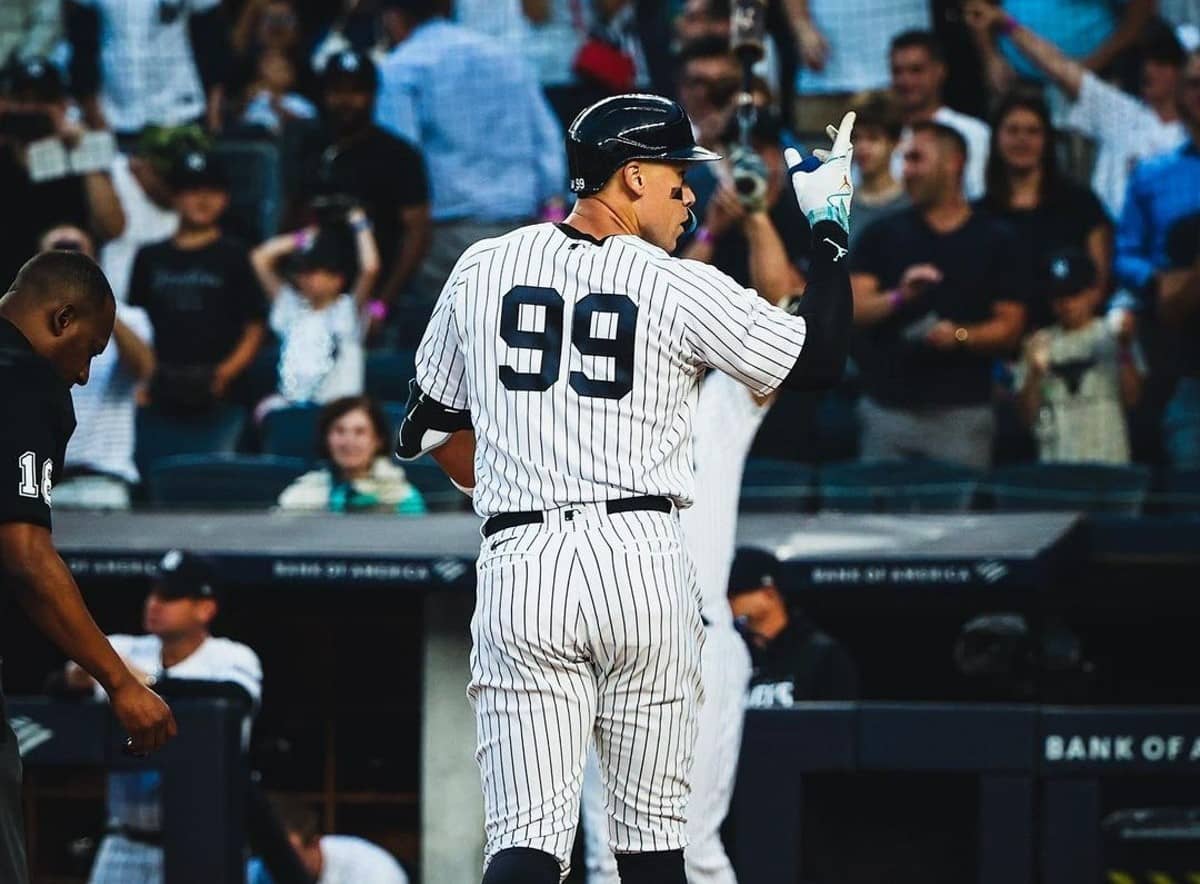

Esteban Quiñones
More Stories By Esteban Quiñones
- Mother’s Day: How Anthony Volpe’s mom molded him into a Yankee phenom
- Rays pay Yankees $15M for 2025 season at Steinbrenner Field
- Yankees to usher in new radio era as Dave Sims reportedly replaces John Sterling
- Insider reveals 15 potential trade targets for Yankees’ offseason strategy
- Luke Weaver calls Juan Soto a ‘unicorn’ as Yankees enter high-stakes free agency battle
Table of Contents
The New York Yankees should seriously consider moving Aaron Judge to the leadoff spot in their batting order, a move that could address several issues currently hindering the team’s offensive output—issues that manager Aaron Boone might be overlooking.
Tom Verducci of Sports Illustrated has made a compelling case for this strategic change in the Yankees lineup. According to him, pitchers have been particularly cautious when facing Aaron Judge this month, with nearly two-thirds of their pitches landing outside the strike zone. Moreover, in 20% of the Yankees’ losses this season, the slugger has been left stranded either on deck or in the hole, unable to influence the game’s outcome. Compounding the problem, the Yankees’ leadoff hitters have underperformed significantly, delivering the worst stats of any spot in the lineup and recording the franchise’s lowest on-base percentage from the leadoff position since Horace Clarke in 1968.
His idea of moving Aaron Judge to the top of the order gains further credibility when considering a similar decision made by Los Angeles Dodgers manager Dave Roberts. Despite the impending return of Mookie Betts from injury, Roberts announced he would keep Shohei Ohtani as the leadoff hitter. Roberts explained that this arrangement not only separates Freddie Freeman and Betts in the lineup but also maximizes the number of at-bats for the team’s top hitters.
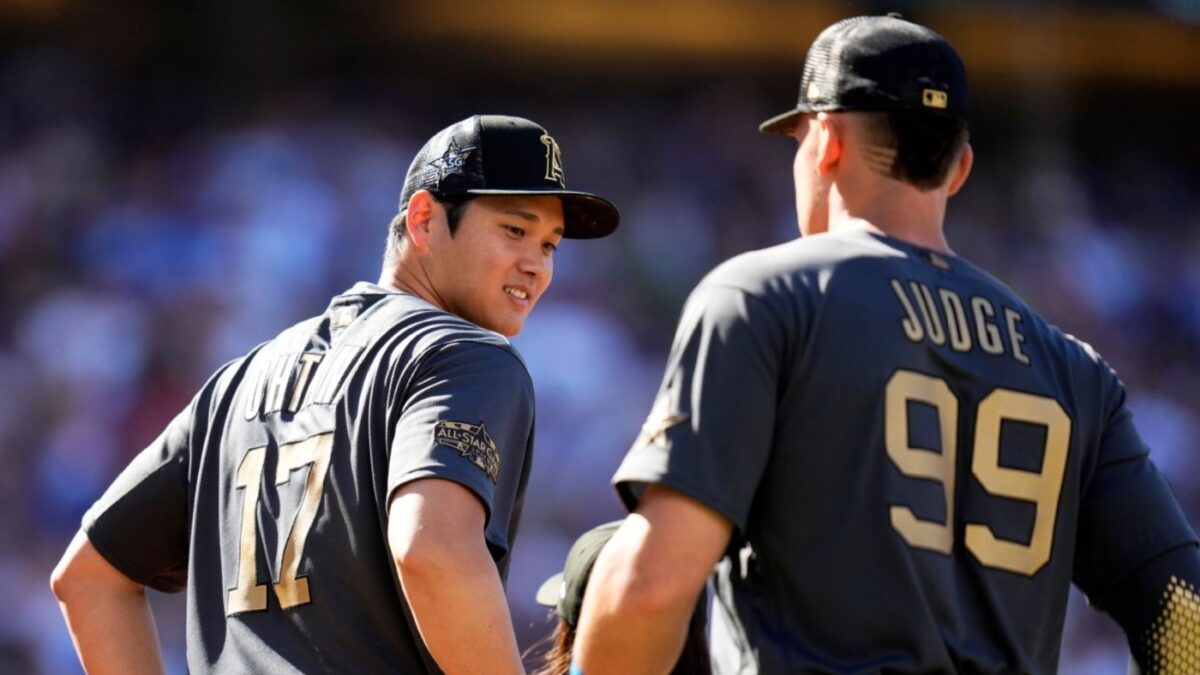
Roberts emphasized that while Betts is an outstanding player, Ohtani has the ability to make a game-changing impact from the very first pitch. This strategy underscores a straightforward principle: giving your best hitters as many opportunities as possible to make a difference.
Applying this approach to the Yankees, moving Judge to the leadoff spot could solve several of the team’s offensive struggles and create more scoring opportunities, potentially leading to better results down the stretch.
The case for moving Aaron Judge to the leadoff spot in the New York Yankees’ lineup becomes even more compelling when analyzing recent game outcomes. In 10 of the team’s 48 losses, the slugger was left waiting on deck or in the dugout, unable to take an at-bat. Of those 10 losses, six were decided by just one or two runs, underscoring the potential impact Aaron Judge could have had if given a chance to swing the bat.
Manager Aaron Boone’s current approach, which leans on players like Alex Verdugo or Gleyber Torres to set the stage for Aaron Judge, has not been producing the desired results. Oddly enough, the Yankees’ ninth-place hitters have been more effective at getting on base than their leadoff hitters, a scenario that’s both unusual and inefficient for a successful lineup.
The solution seems clear: give Aaron Judge more plate appearances. This would not only increase his opportunities to hit but might also force pitchers to throw him more favorable pitches. Pairing Juan Soto behind Aaron Judge in the lineup could create a formidable combination at the top of the order, adding further pressure on opposing pitchers.
Such a shift in strategy could be crucial in maximizing Aaron Judge’s value and boosting the Yankees’ offensive performance. To optimize their lineup, the Yankees might need to explore unconventional approaches, ensuring they fully capitalize on their captain’s elite hitting abilities.
This argument for Aaron Judge leading off goes beyond the model set by Shohei Ohtani with the Dodgers. There are several additional reasons why this lineup adjustment could be the right move for the Yankees, making it a strategy that deserves serious consideration from the team’s management.
Aaron Judge is forcing opponents to give free passes
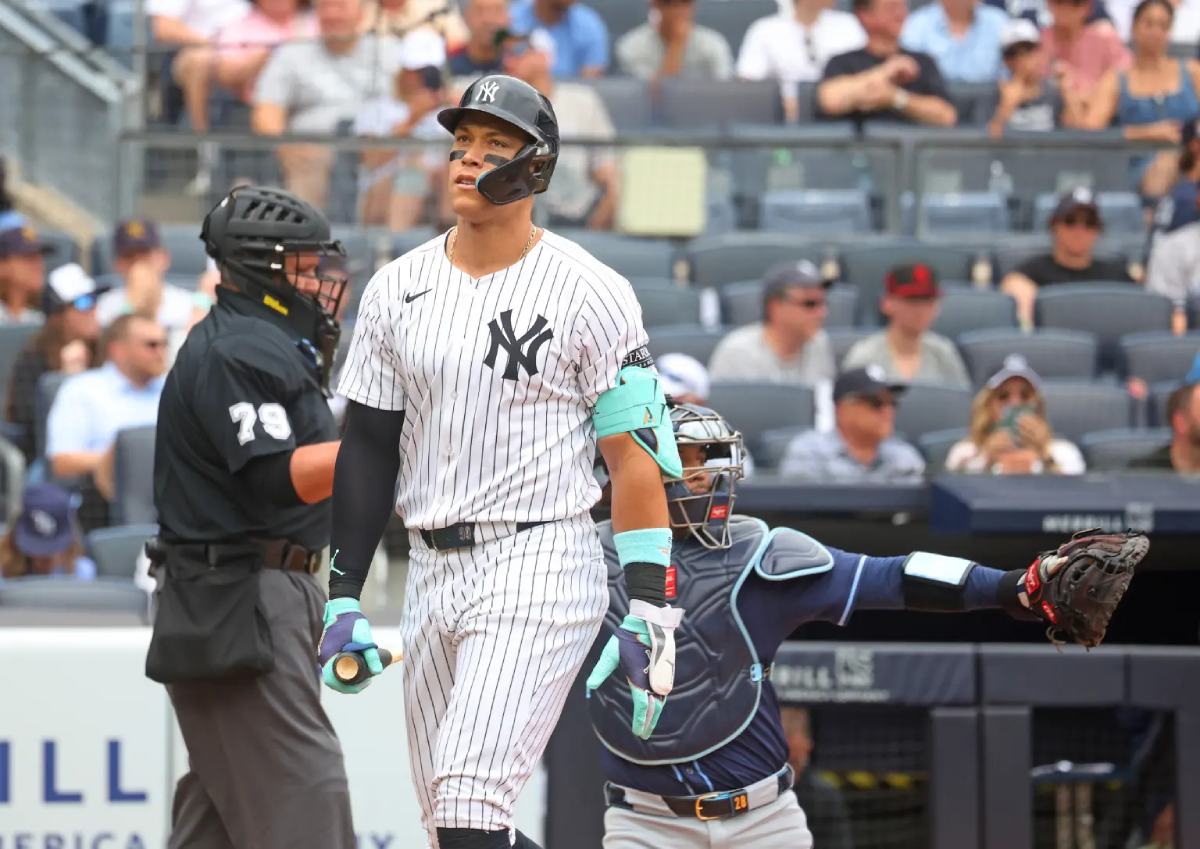
The notion that Aaron Judge would see more strikes with Juan Soto frequently on base has quickly faded, as pitchers have adjusted their approach, prioritizing the prevention of home runs above all else. Even with Soto on base, pitchers are increasingly willing to pitch around Aaron Judge, viewing a walk as a safer option than risking a home run.
Recent data underscores this trend, revealing that in August, a record 54% of the pitches thrown to Aaron Judge have been outside the strike zone, the highest rate of any month this season. But this statistic alone doesn’t fully illustrate how cautious pitchers have become. The data doesn’t account for intentional walks, which, while not adding to the pitch count, further highlight the avoidance tactics used against Aaron Judge.
He has been intentionally walked five times in August, a notable rise compared to earlier months when Aaron Judge received no more than two intentional walks. If these intentional walks are treated as four-pitch walks, reflecting the pitcher’s true intent, the percentage of pitches the Yankees superstar sees outside the strike zone climbs to an eye-opening 61.1%, a dramatic increase over previous months.
With pitchers increasingly steering clear of the strike zone when facing Aaron Judge, the Yankees can no longer afford to sit back. The team must take proactive measures to address this issue, as it’s unlikely to change on its own. This data further bolsters the case for rethinking the slugger’s spot in the batting order to maximize his at-bats and overall impact on the game.
| Pitches Out of Zone to Aaron Judge | ||
| w/o IBB | w/IBB | |
| April | 53.70% | 54.30% |
| May | 49.20% | 50.00% |
| June | 50.90% | 51.80% |
| July | 51.70% | 52.10% |
| August | 54.00% | 61.10% |
Aaron Judge to spark offense batting leadoff
While pitchers might cautiously approach Aaron Judge as the game’s leadoff batter, they aren’t intentionally walking him. Should he manage to draw a walk, it immediately sets up a scoring opportunity with Juan Soto coming to the plate with a runner already on first.
Soto behind him to multiply Yankees’ threats
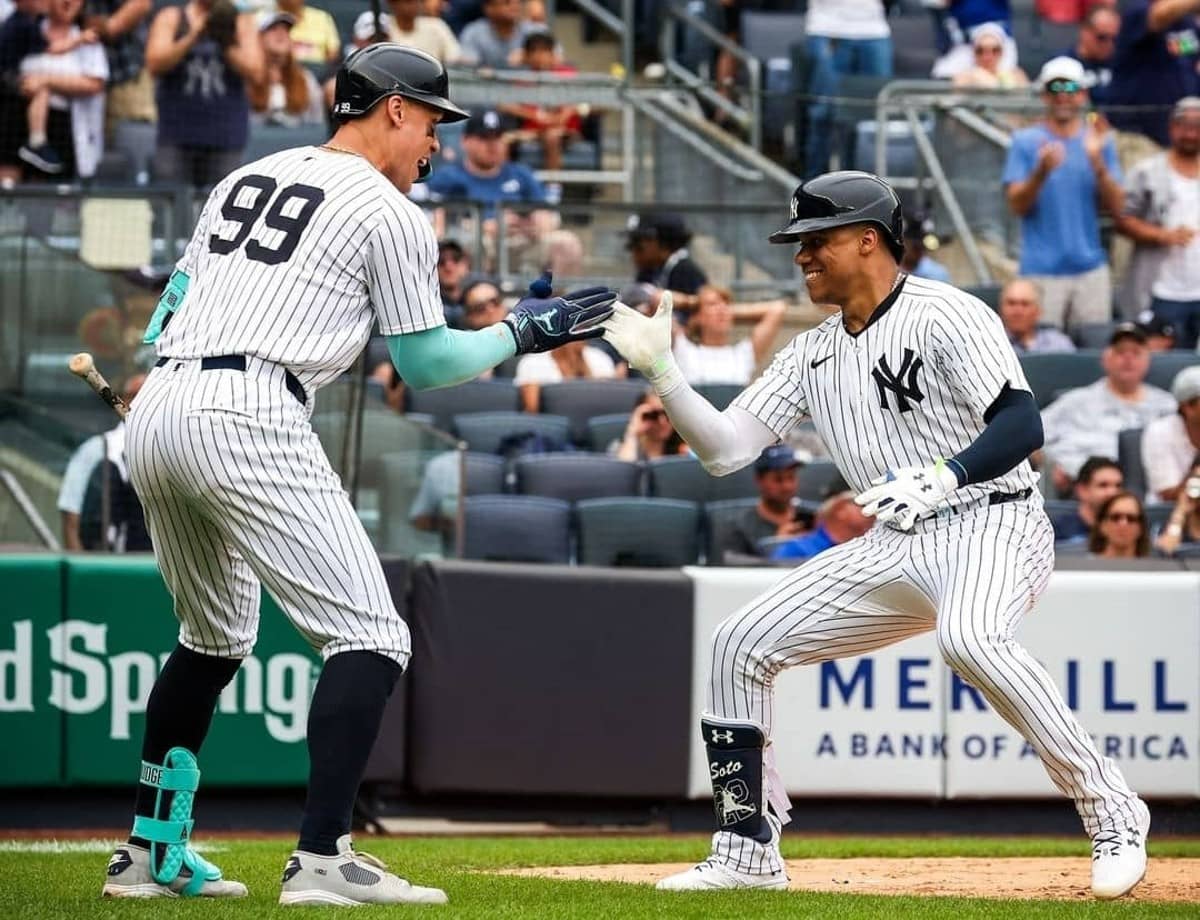
Juan Soto’s plate discipline is unmatched, leading the league with a remarkably low swing rate of 37.4%. This patient approach holds steady no matter who bats after him. On the other hand, Aaron Judge thrives on forcing pitchers to throw strikes and then punishing those pitches. The Yankees’ primary goal in structuring their lineup should be to ensure Aaron Judge gets more pitches within the strike zone.
The reasoning behind this strategy is clear when you examine Aaron Judge’s effectiveness on pitches in the zone. His ability to drive those pitches is second to none in the league. For comparison, Soto boasts a strong .581 slugging percentage on in-zone pitches, but even that is outpaced by the likes of José Altuve, Cal Raleigh, and Christian Walker. Soto swings at 60% of pitches in the zone, while Aaron Judge is even more aggressive, with a 66% swing rate.
What truly distinguishes Aaron Judge is his slugging percentage on these in-zone pitches. He leads by a wide margin, outslugging the next-best right-handed hitter, Marcell Ozuna, by 148 points. This considerable gap highlights the slugger’s extraordinary talent for turning strikes into big hits.
This data underscores the need to position Aaron Judge in the lineup in a way that maximizes his chances of seeing more strikes, thereby fully utilizing his exceptional hitting abilities.
| Highest SLG on Pitches in Zone, 2022–24 | |
| 1. Aaron Judge, Yankees | 0.795 |
| 2. Shohei Ohtani, Dodgers | 0.734 |
| 3. Yordan Álvarez, Astros | 0.667 |
| 4. Bryce Harper, Phillies | 0.657 |
Aaron Judge likely to resolve Yankees’ leadoff problem
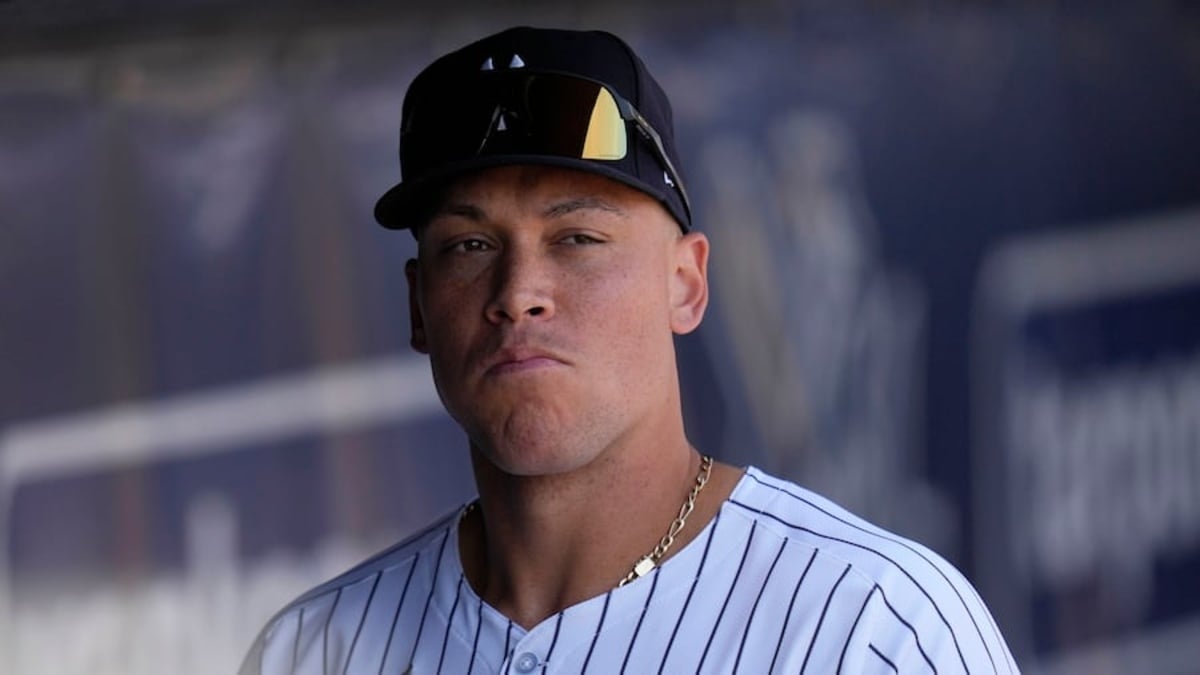
The New York Yankees have struggled with their leadoff hitters this season, as reflected in several troubling statistics. The leadoff spot has posted a .279 on-base percentage (OBP), the second-lowest in the league. Only the Kansas City Royals, with a .271 OBP from their leadoff spot, have fared worse. The Royals’ choice to use Maikel Garcia, who has a .284 OBP, in the leadoff role for 92 games is notably perplexing.
Historically, this season’s leadoff OBP is the Yankees’ worst since the mound was lowered in 1969, matching only their performances in 1968 (Horace Clarke), 1960 (Tony Kubek), and 1965 (Bobby Richardson).
In a surprising twist, Yankees’ ninth-place hitters have outperformed their leadoff counterparts, with a .317 OBP. Typically, leadoff hitters enjoy a 45-point advantage over ninth-place hitters, making this inversion unusual.
Individual performances in the leadoff role have been lackluster. Anthony Volpe, Gleyber Torres, Alex Verdugo, and Ben Rice have all recorded OBPs of .293 or lower. Torres has been especially ineffective against non-fastball pitches, batting just .154, the lowest in the league.
The leadoff spot, which should ideally offer the most productive opportunities, is currently the Yankees’ weakest position for on-base performance. This highlights a fundamental flaw in lineup strategy, where the least effective hitters are given the most chances. These statistics emphasize the need for the Yankees to reassess their leadoff strategy and consider alternative lineup options to enhance their offensive efficiency.
Aaron Judge to secure more plates, vital final at-bat
To maximize Aaron Judge’s opportunities, the Yankees should consider moving him to the leadoff spot. Batting Judge third does not increase his chances of making a crucial ninth-inning appearance, as relying on players like Gleyber Torres and Alex Verdugo to get on base for him has proven unreliable. By placing Aaron Judge at the top of the lineup, he is more likely to secure that vital at-bat in the final inning.
The calculation is straightforward: each spot higher in the batting order translates to approximately 18 additional plate appearances over 150 games. Therefore, if Aaron Judge is moved to the leadoff position for the final 46 games, he would gain about 11 extra plate appearances. Given that Aaron Judge hits a home run every 12.3 plate appearances, this adjustment could lead to more opportunities for him to deliver power hits.
Yankees should learn from history
In 2021, Los Angeles Angels manager Joe Maddon experimented with David Fletcher, who had a .297 on-base percentage, as the leadoff hitter ahead of Shohei Ohtani and Mike Trout. However, Maddon shifted his strategy at the start of the 2022 season, moving Ohtani to the leadoff spot and Trout to second base. This change was driven by Maddon’s evaluation of their batting form, opting to provide Ohtani with better protection. Under this configuration, the Angels posted a 9-8 record.
Regarding the current debate over whether Aaron Judge should lead off for the New York Yankees, Maddon has voiced support for the move. He argues that placing Aaron Judge at the top of the lineup would allow the entire team to offer protection, rather than relying on just one hitter behind him. Maddon’s endorsement of this strategy reflects his previous rationale for using Ohtani in the leadoff spot, suggesting that maximizing protection for a team’s top hitter can be highly effective.
Aaron Judge has prior lead-off experience
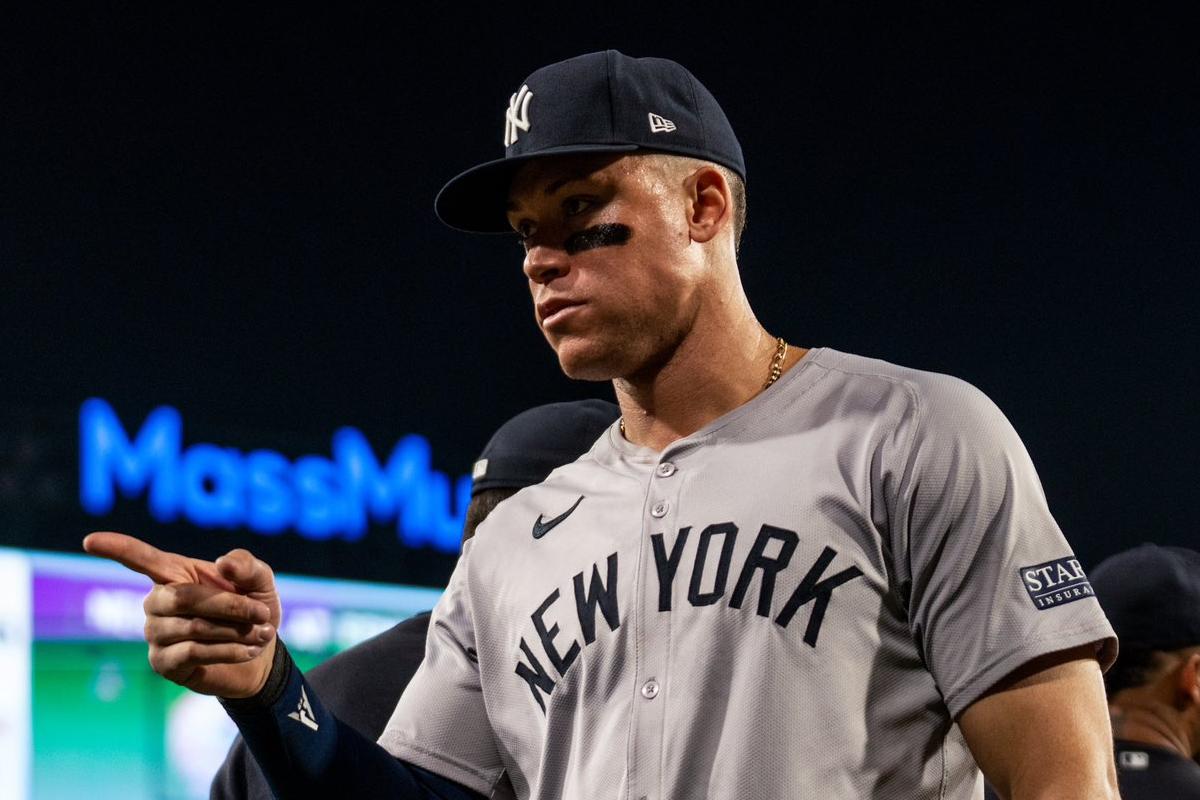
In September 2022, Aaron Judge spent a significant portion of the Yankees‘ lineup in the leadoff position, primarily to enhance his plate appearances as he chased the American League home run record. The same tactic could now be leveraged to boost the team’s win rate.
Aaron Judge’s performance as a leadoff hitter was exceptional in 2022. Over 34 games in this role, he achieved a .366 batting average, a .481 on-base percentage, and a .740 slugging percentage. These figures suggest Judge may rank among the most effective leadoff hitters in the sport’s history.
Statistically, Aaron Judge’s .466 on-base percentage from the leadoff spot is the second highest of all time, trailing only John McGraw’s .504 OBP from 1901-1906. This positions him as one of the elite leadoff hitters, despite the Yankees not regularly using him in this role.
The notion of batting Aaron Judge Leadoff might seem unconventional, given that it would ensure at least one of his at-bats occurs with no runners on base. Ideally, high-OBP hitters should precede him to create more RBI opportunities. However, the current Yankees lineup has not consistently provided these situations.
Power hitters have traditionally not occupied the leadoff spot. Legendary sluggers such as Barry Bonds, Albert Pujols, Stan Musial, Hank Aaron, Willie McCovey, and Ted Williams, despite being among the most frequently intentionally walked players, rarely batted first in the lineup.
| Highest Career SLG at Leadoff (Min. 35 GS) | |
| 1. Aaron Judge | 0.711 |
| 2. Teoscar Hernández | 0.605 |
| 3. Fernando Tatís Jr. | 0.599 |
| 4. Bobby Higginson | 0.592 |
| 5. Jeffrey Hammonds | 0.59 |
Despite the conventional wisdom against placing the best hitter in the leadoff position, modern baseball strategies are evolving. For instance, Joe Maddon’s decision to use Anthony Rizzo as a leadoff hitter for the Chicago Cubs from 2017-2019 yielded impressive OPS figures of 1.053, .979, and 1.167. More recently, Dave Roberts’ choice to keep Shohei Ohtani in the leadoff spot for the Dodgers further illustrates this shift.
If manager Aaron Boone moves Aaron Judge to the leadoff position, it could potentially revitalize the Yankees’ offense and ensure the slugger receives critical ninth-inning at-bats in close games—opportunities he currently misses. While this approach might seem radical by traditional standards, it aligns with the evolving strategies in baseball.
Such a move would place Aaron Judge alongside Ohtani, the current league leaders in home runs and slugging, respectively, as two of the most impactful leadoff hitters in baseball history, reflecting the ongoing evolution in baseball strategies.
What do you think? Leave your comment below.
- Categories: aaron judge, anthony volpe, Gleyber Torres, Juan Soto
- Tags: aaron judge, anthony volpe, Gleyber Torres, Juan Soto


 Follow Us
Follow Us









